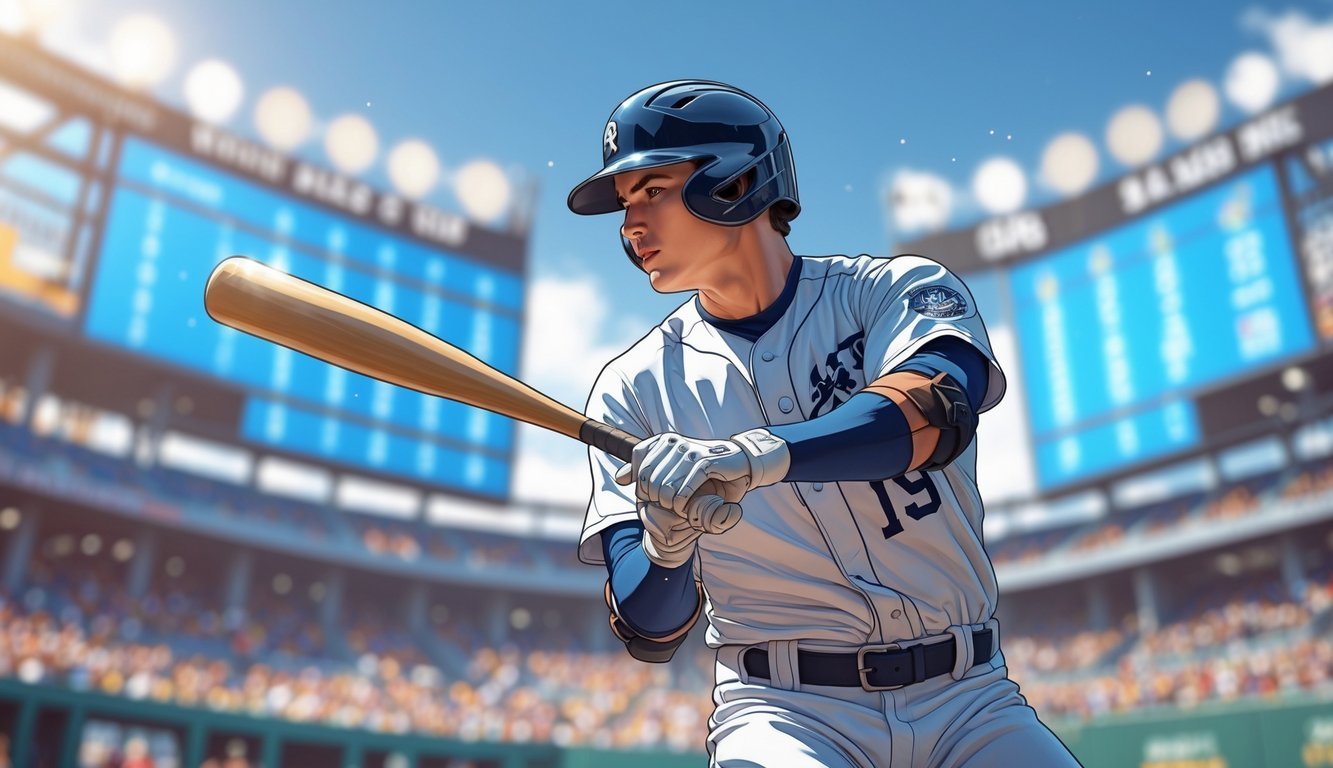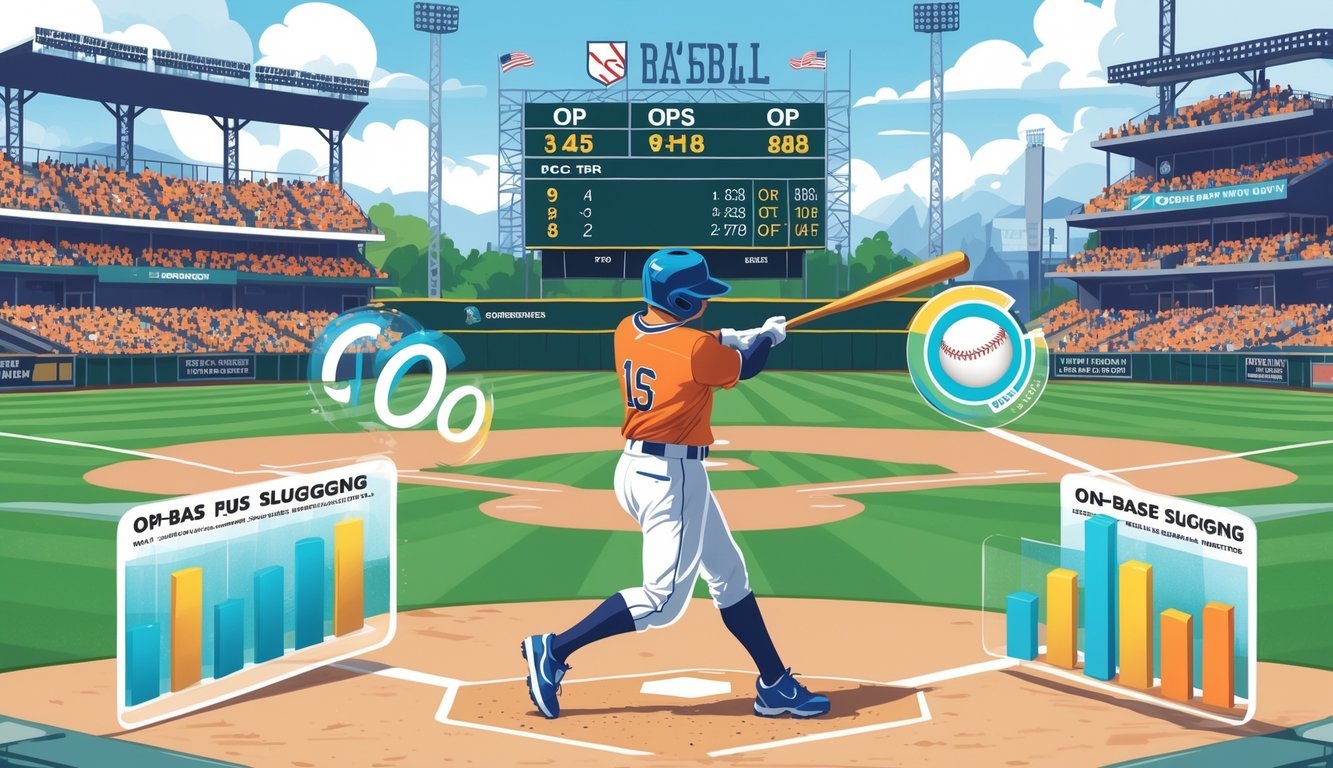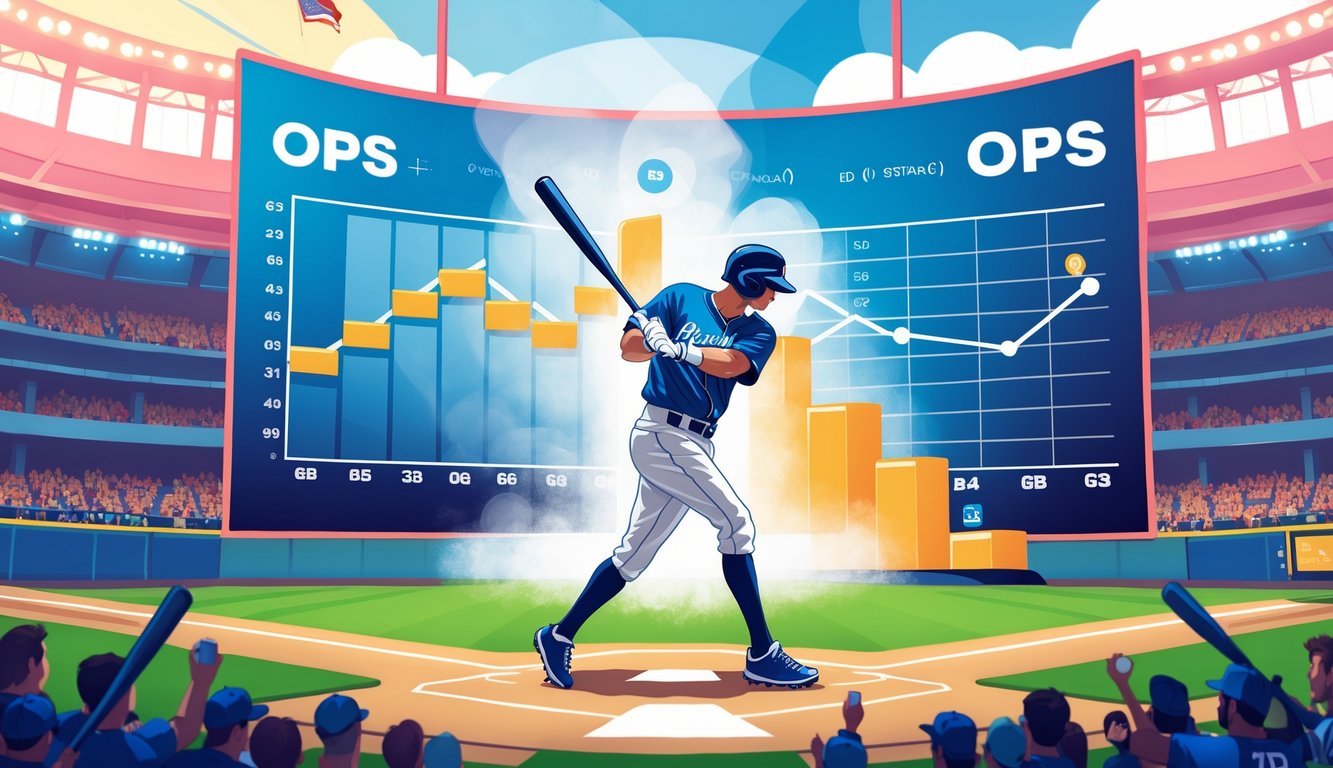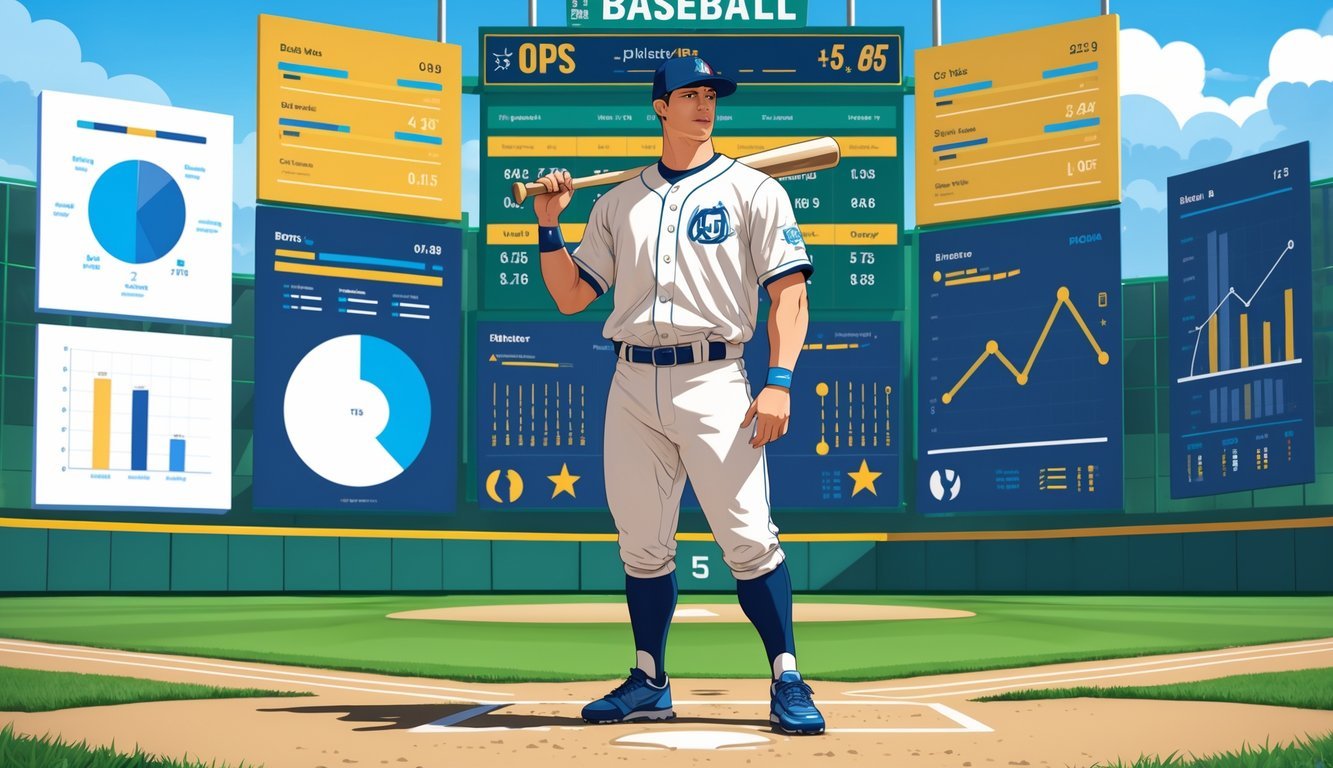Physical Address
304 North Cardinal St.
Dorchester Center, MA 02124
Physical Address
304 North Cardinal St.
Dorchester Center, MA 02124
OPS, or On-base Plus Slugging, combines on-base percentage and slugging percentage to evaluate a baseball player's offensive skills and overall hitting performance.

When you’re watching baseball, you’ll probably hear people mention OPS.
It’s one of those stats that comes up a lot, and for good reason.
OPS stands for On-base Plus Slugging.
Basically, it adds up how often a player gets on base and how much power they bring at the plate.
A good OPS in baseball usually means anything above .800, which tells you a player is hitting better than most in the MLB.
If a player’s OPS climbs to .900, you’re looking at someone who’s considered All-Star material.
When it’s around 1.000 or higher, that’s MVP-level stuff.
OPS gives you a better sense of a player’s total offensive skill.
It’s way more telling than just batting average.
Getting a feel for what a good OPS is can make watching games or checking stats a lot more fun.
It’s a quick way to spot great hitters and just understand the game on a deeper level.

OPS measures how good a player is at getting on base and hitting with power.
It combines two important stats, so you get a fuller picture of offensive skills.
Let’s break down what OPS means, how you figure it out, and why it actually matters when you judge players.
OPS stands for On-base Plus Slugging.
The math is simple: you just add on-base percentage (OBP) and slugging percentage (SLG) together.
OPS = OBP + SLG
That one number gives you a quick sense of a player’s batting skill.
If the OPS is high, you know the player is good at creating runs.
People like OPS because it mixes getting on base and power into one stat.
Sabermetrics folks use it a lot to look beyond basic batting average.
On-base percentage (OBP) tells you how often a player reaches base.
It counts hits, walks, and getting hit by a pitch, but skips things like errors or fielder’s choices.
Here’s the OBP formula:
OBP = (Hits + Walks + Hit-By-Pitches) ÷ (At-Bats + Walks + Hit-By-Pitches + Sacrifice Flies)
Slugging percentage (SLG) is all about power.
It looks at how many total bases a player gets per at-bat, giving extra weight to doubles, triples, and homers.
SLG = Total Bases ÷ At-Bats
When you put OBP and SLG together, you see both how often a player gets on base and how much damage they do when they hit.
OPS gives you a way clearer look at a player’s offensive performance than just batting average.
Batting average only cares about hits, but OPS includes walks and power.
If you want to know who really helps a team, look at OPS.
Players with high OPS usually create more scoring chances and drive in runs.
League average OPS usually sits around .700, and anything above .800 stands out as good.
So, it’s a handy stat for comparing players and figuring out who’s really making an impact.

OPS measures how well hitters get on base and hit for power.
Knowing what numbers are considered good or average helps you see a player’s value in Major League Baseball.
A good OPS usually means anything above .800.
That shows a player is producing runs at a strong rate by combining on-base skills and power.
The league average OPS tends to land around .720 to .750 in MLB.
Players near that range are basically average, doing what’s expected at the big-league level.
You might spot OPS+ too, which adjusts OPS for ballparks and league factors.
An OPS+ of 100 means league average; anything above 100 is better than average.
When a player’s OPS hits .900, you’re probably looking at someone who’s above average or even All-Star level.
These are the hitters who drive in runs, pick up extra-base hits, and score a lot.
If someone’s OPS is close to or above 1.000, you’re talking about MVP territory.
Those players have both big power and top-notch on-base skills.
Players like Shohei Ohtani and Ronald Acuña Jr. often finish seasons with OPS numbers way above .900.
You can spot elite hitters by how often they get on base and how much power they show.
OPS is straightforward, but it doesn’t cover everything.
Stats like wOBA (weighted on-base average) and wRC+ (weighted runs created plus) give a more accurate take on run production.
While OPS adds two things together, wOBA weighs each outcome by its real value, and wRC+ adjusts for parks and league context, similar to OPS+.
Even so, lots of people stick with OPS since it’s easy to get and usually lines up with the more complex stats.
It gives you a fast read on a player’s overall offensive production.
Some of the all-time greats put up insane OPS numbers. Babe Ruth and Barry Bonds both had career OPS way over 1.000.
Josh Gibson from the Negro Leagues also posted a monster OPS-like stat, showing off his power and knack for getting on base.
Right now, hitters like Vladimir Guerrero Jr. stand out for high OPS, thanks to their mix of power and on-base ability.
Checking out career leaders or season leaders in OPS is a fun way to see who’s been the best at the plate, both now and in the past.

OPS can tell you a lot about a player’s hitting.
It shows how well they get on base and how much power they bring.
Different levels of play and even other sports can change how you read OPS numbers.
OPS adds a player’s on-base percentage and slugging percentage.
It shows both how often they get on base and how strong their hits are.
Higher numbers mean better overall hitting.
An OPS above .800 is generally good.
If a player’s OPS is around .900, that’s excellent and usually means they’re among the top hitters.
OPS over 1.000 is rare and usually points to MVP-level performance.
You can use OPS in both sports, but the averages and conditions don’t match up.
Comparing OPS between baseball and softball can be tricky since pitching, field size, and rules are all different.
For high school, an OPS near or above .800 is often impressive.
It shows the player stands out against their peers and might have potential for higher levels.
Yeah, it usually does.
A high OPS means a player gets on base a lot and has strong hits.
Those are the main ingredients for scoring runs and helping the team win.
OPS shows whether a hitter gets on base and hits for power.
It gives you a fast snapshot of whether a player does both well, instead of just excelling at one part of hitting.
Honestly, if you want to spot a well-rounded batter, OPS is a solid place to start.